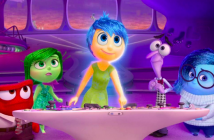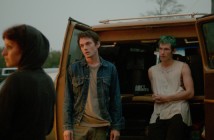The entrance of a movie theatre is lined with the blood curdling posters of slasher films, each one teasingly more brutal than the last. As you walk past, a pattern begins to emerge. A villainous celebration is on display showing off an array of monsters from wolfmen to pin-headed demons, but what about that defiant woman poised for action in the foreground, is she not also the star? Behind every great horror villain, there’s a great heroine and too long have they been dismissed as interchangeable, superfluous eye candy. Ask yourself this, where would Michael Myers be without Laurie Strode? Probably at Camp Crystal Lake with a bunch of faceless teens.
A strong heroine serves as an anchor in a sea of roaring bloodbaths. They keep films from getting carried away into the rabid gore frenzy horror all too often devolves into. They offer a mirror for the audience, a direct representation of the innocents and terror you feel while powerlessly watching the nightmare unfold on the screen. Like the audience who grows ever more savvy with each film, the most successful heroines grow and evolve within their own tragic trappings. This is how they not only survive, but also help push the storytelling into new territory. To better illustrate this uniquely evolving relationship, I call upon the power of two of horrors most celebrated heroines: Alien killer extraordinaire, Lieutenant Ripley, and Scream queen, Sydney Prescott. Both characters have lasted for four installments of well-recognized franchises and both have similarly evolved within their respective stories, culminating in their glorious transcendence of said story. But we’re getting ahead of ourselves. We need to go back at where it all began.
 Firstly, there may be some disagreement with categorizing the Alien films as purely horror. It’s true, the second film is far closer to the realm of Arnold Schwarzenegger than it is to Vincent Price, but there’s no denying the first film is a straight up slasher. Sure, it happens to be in space and takes place in the future and has science fiction elements and life forms from other planets and humanoid robots and self-destruct devices, but at its core, it’s a slasher film. A group of characters are slowly picked off one by one until the “final girl” has an excruciatingly tense chase scene where she finally overcomes her stalker. The Alien even has a super phallic second mouth, not unlike Michael’s kitchen knife, solidifying the same penetration anxiety the slasher film obsessively and effectively exploits. These classic slasher elements are ingrained within the Alien films and although the later installments deviate from the path, traces of these themes can still be found. So, for the sake of this piece, Alien is mostly a horror franchise and Ripley is a horror heroine.
Firstly, there may be some disagreement with categorizing the Alien films as purely horror. It’s true, the second film is far closer to the realm of Arnold Schwarzenegger than it is to Vincent Price, but there’s no denying the first film is a straight up slasher. Sure, it happens to be in space and takes place in the future and has science fiction elements and life forms from other planets and humanoid robots and self-destruct devices, but at its core, it’s a slasher film. A group of characters are slowly picked off one by one until the “final girl” has an excruciatingly tense chase scene where she finally overcomes her stalker. The Alien even has a super phallic second mouth, not unlike Michael’s kitchen knife, solidifying the same penetration anxiety the slasher film obsessively and effectively exploits. These classic slasher elements are ingrained within the Alien films and although the later installments deviate from the path, traces of these themes can still be found. So, for the sake of this piece, Alien is mostly a horror franchise and Ripley is a horror heroine.
Scream on the other hand is as slasher-filmy as slasher films get: we have a masked killer, teens getting gutted and a final epic chase between Ghostface and Sydney. The only true omission perhaps is the lack of first person perspective, but we can’t get too picky.
Both Sydney and Ripley start, like we do, innocently enough. This is why the first films are about loosing exactly that: innocence. We are introduced to the normative lives of the characters to get an understanding of what their world is before the horror sets in. It’s important for us to understand what’s being lost, for we too are losing it. Soon enough, the shadow descends and terror comes calling. In both cases, that’s a literal call; Sydney answers the phone and Ripley answers a distress signal. Their lives are interrupted by the threat of looming death and the knowledge that it, whether it’s an Alien or a masked killer, is coming for them. This is the main horror at work, the survivor’s fear of an untimely and brutal end. They are confronted by exactly what we’ve come to the theatre to experience: an extreme expression of our anxieties concerning the body and mortality. By the end of the film, despite the violence they’ve endured, they are triumphant and we get to wallow in their bittersweet victory. The nightmare has been overcome, or at least until the sequel.
In the second installments, everyone knows what they’re in for, including our heroines. The shocking realization of inevitable death has lost its power. Since the night is full of monsters, the world is no longer safe; this is now just an accepted truth. The sequel therefore needs to express something new. It’s not enough simply to rehash the original. In both Aliens and Scream 2, we find our heroines coping with the events of the previous film. In terms of franchises, part two is the character’s emotional core. It delves into their pathos: Ripley’s loss of her family and Sydney’s inability to trust. Both women are alone, isolated by their experiences and find themselves at odds with their surroundings. Despite this, they struggle to stay connected with the world that has no place for them, but they are eventually rejected.
 Sydney and Ripley are alone. In part three, whatever hope we had for them finding happiness is immediately destroyed. Sydney has hidden herself away in a secluded house in the woods and Ripley is marooned on a hostile planet… Also, everyone she loved is once again dead. This seems to happen to both them a lot. With nothing left but their own existence, their final struggle is about escape. Once everything else is stripped away, it’s just them and their monster. Ripley, in a sacrificial selfless act, accepts her end and carries her monster with her into oblivion. A tragic escape, but an escape nonetheless. Sydney faces her horrific past and takes down the person who set her nightmare into motion. By the end, she doesn’t even bother locking her door, despite the ominous gust of wind that nudged it open. The terror has been dispelled, or at least no longer holds power over her. She, like Ripley, is free.
Sydney and Ripley are alone. In part three, whatever hope we had for them finding happiness is immediately destroyed. Sydney has hidden herself away in a secluded house in the woods and Ripley is marooned on a hostile planet… Also, everyone she loved is once again dead. This seems to happen to both them a lot. With nothing left but their own existence, their final struggle is about escape. Once everything else is stripped away, it’s just them and their monster. Ripley, in a sacrificial selfless act, accepts her end and carries her monster with her into oblivion. A tragic escape, but an escape nonetheless. Sydney faces her horrific past and takes down the person who set her nightmare into motion. By the end, she doesn’t even bother locking her door, despite the ominous gust of wind that nudged it open. The terror has been dispelled, or at least no longer holds power over her. She, like Ripley, is free.
The conclusion seems to be a fitting one, but where does it leave the audience? To understand the journey, both of these rough and tough heroines get a victory lap in the form of Alien: Resurrection and SCRE4M. In these two films, Ripley and Sydney seem to be only half involved. It’s as if they’re beyond everything, which makes sense in terms of the audience. By the time the fourth film roles around, chances are nostalgia is one of the most powerful responses you’ll have. You’ve become so familiar with the monster that all its shock value has probably been used up. We, like our two heroines, have finally transcended the films, as well as whatever fears we needed exorcising. Sydney by now is an elemental force of nature, hunting as much as she’s being hunted. Ripley has become so ingrained with the Alien that it’s literally a part of her. Fear seems a thing of the past and the terror that once oppressed them now gives them strength to fight back and continue on.
Reconciling life and death is a struggle that both profoundly unifies as well as isolates us. Seeing this drama enacted in the heroine’s journey is a purging process, a kind of warm hug that offers a slightly uplifting notion: although the skies look gloomy, the rain falls on all of us sooner or later and what’s inevitable shouldn’t be dreaded. Even though the monster, the underlying fear of the unknown, can never truly be conquered, it can be managed and the fear can be overcome. That’s not to rule out the possibility of another sequel, after all, there are still a lot of chests just waiting to burst and teens ready for more dismemberment. But rest assured, we can trust in the heroines to lead us through.



